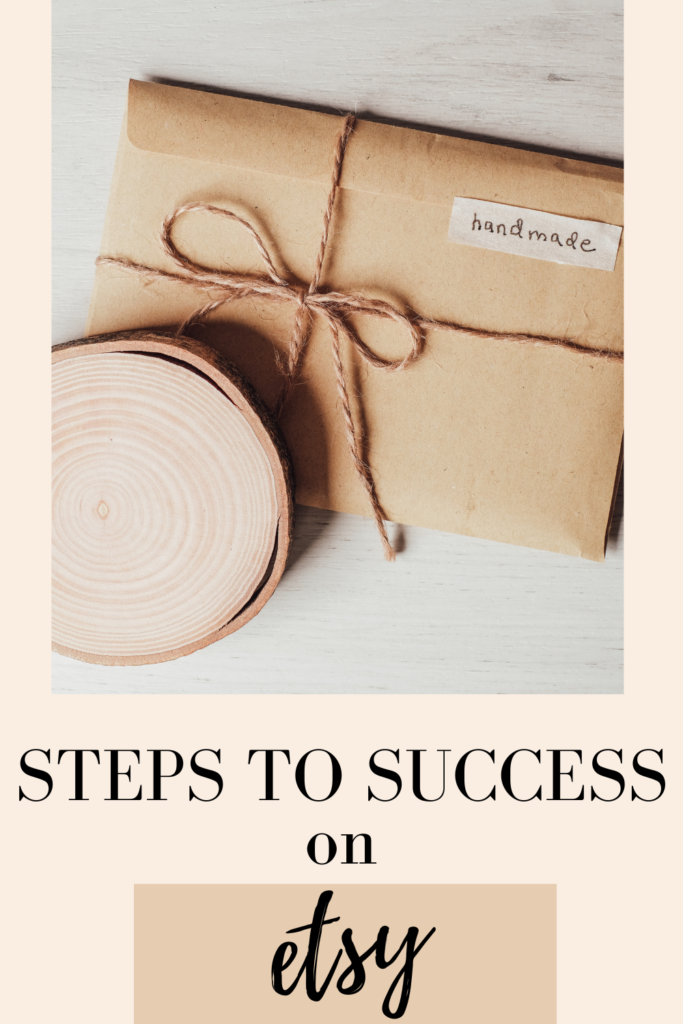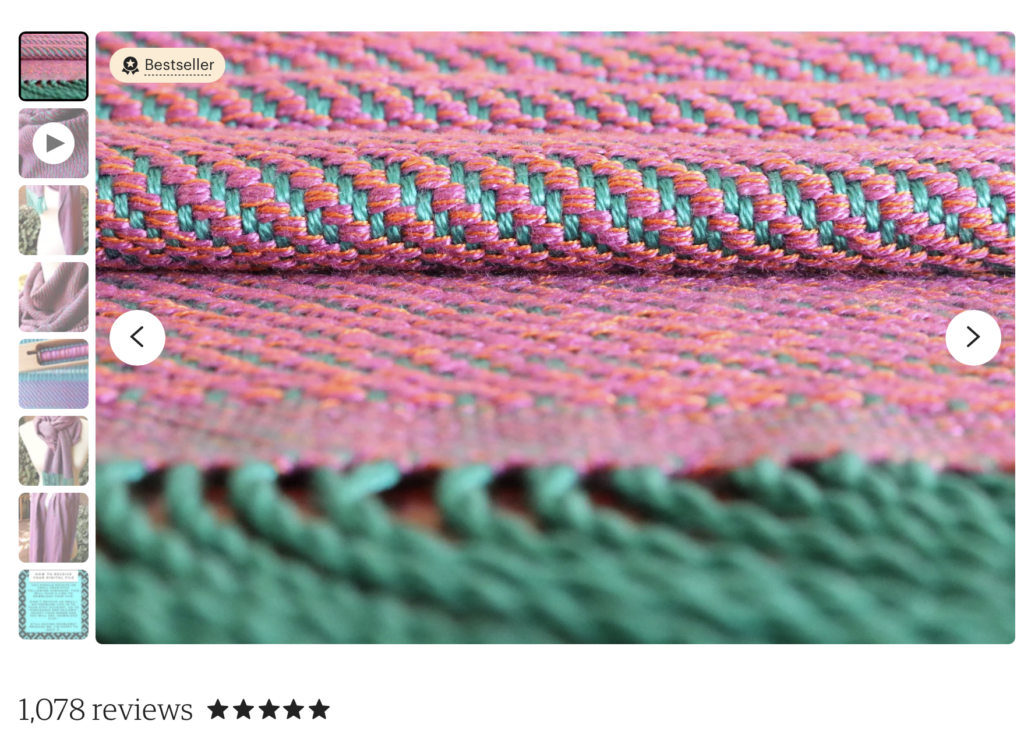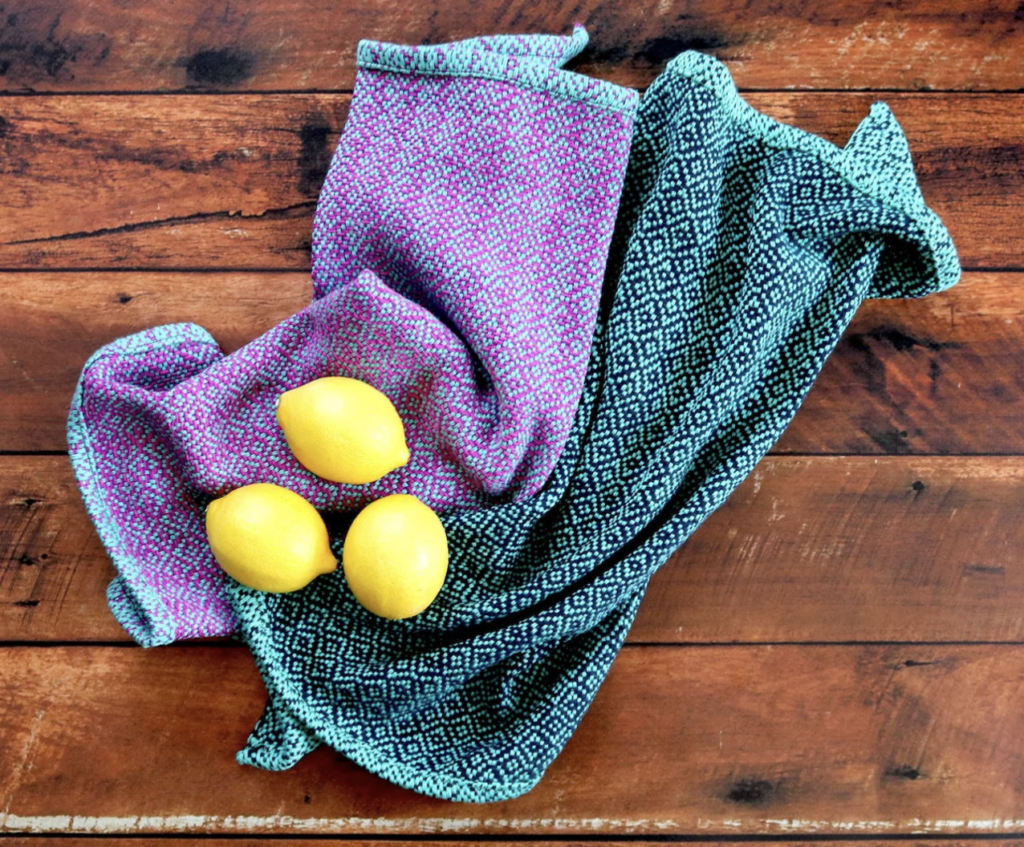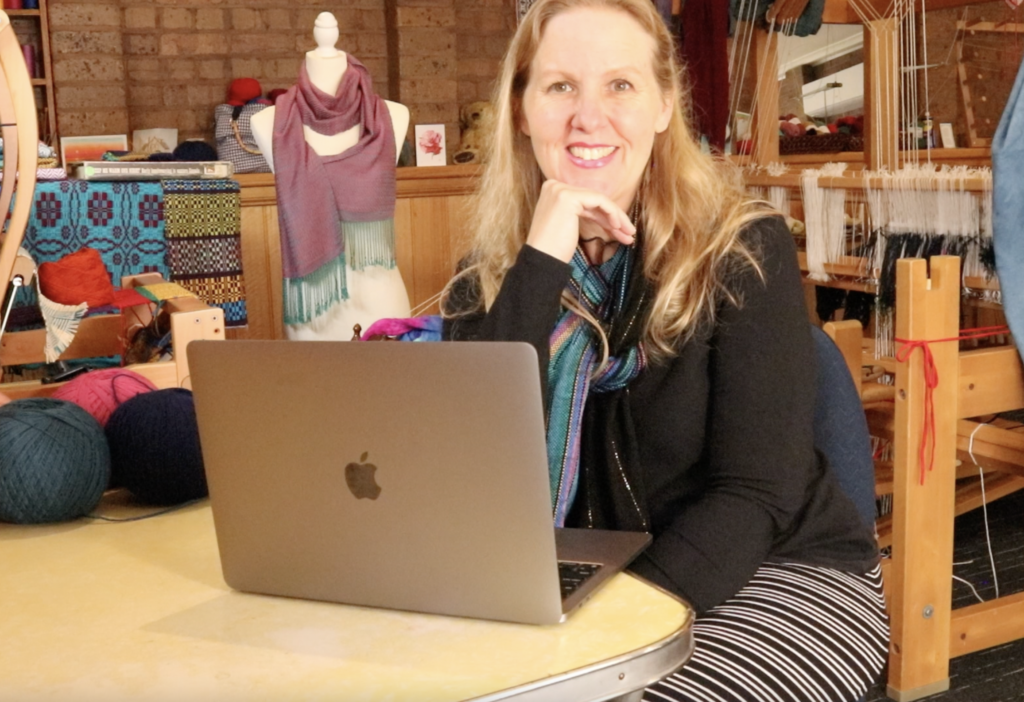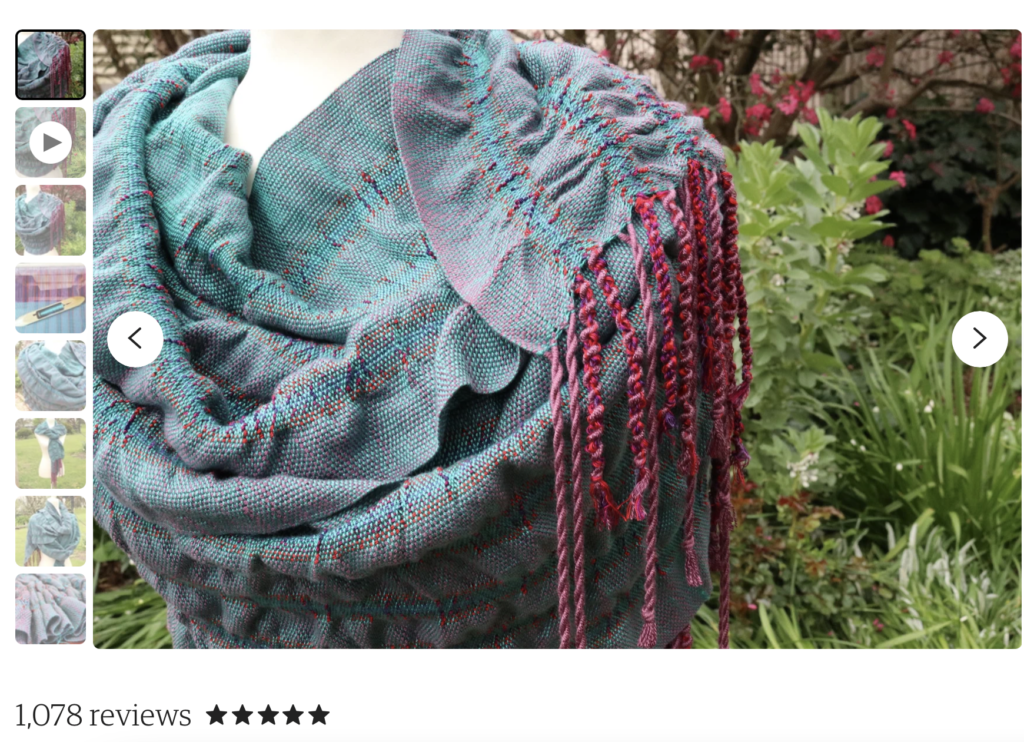Opening your first online shop is such an exciting experience!
When I first started out as an Etsy seller in 2008 there were really only a couple of options for handmade sellers. Etsy is the one that has stood the test of time, but in 2024 you have a lot of choices when it comes to selling online and it may be difficult to choose one that best suits you, your products and your budget.

I sold my handmade goods on Etsy for many years and in the past 5 years I have moved almost exclusively into selling digital products. For me, digital products looks like hand weaving PDF patterns and ebooks.
This year, for a variety of reasons, I decided to open a Shopify store. This store contains the same patterns and ebooks as my Etsy store and the customer experience is quite similar. For now, I am keeping both stores open, and I will explain why as you read on.
Etsy has changed considerably since I opened my first shop there 16 years ago. Many of the changes (in my opinion) have not been for the better and that is why I have started my own store, on my own terms elsewhere.
I still do recommend Etsy for absolute beginners though, and we will have a look at the reasons why.

I’m going to take you through what I consider the pros and cons of Etsy and Shopify as well as how much my monthly fees cost.
Etsy Pros:
It is still a great option for absolute beginners. It’s easy to make an account and start listing products. All payments are processed for you and the templates are simple. Basically, you don’t need a lot of tech knowledge to get started.
One of the main attractions of Etsy for newbie sellers is the tiny financial outlay. The only initial cost you will pay is 20 cents to list an item.
If you don’t make any sales for the month all you will be asked to pay is the 20 cent listing fee, so this is great for beginners as there is very little risk.
The other huge benefit to having a shop on Etsy is that it is a marketplace. This is great for those who are just starting out and may not have a customer base already.

Etsy Cons
Once you make a sale you must pay fees. Any you may be unpleasantly surprised by how much those fees add up to!
Yes, you start out with your very low 20 cent listing fee, but once a sale is made there is a transaction fee of 6.5% (this is even charged on your shipping amount) followed by payment processing fees. The payment processing fees will vary according to your physical location.
I mentioned in the “Pros” section that Etsy is a marketplace, and that can really help to build a customer base. Conversely, that marketplace can work against you because you have so very many competitors and it can be hard to be seen and found by new customers. There are many things you can do to optimise your listings but if you want to increase your reach Etsy will expect you to pay more for that in the form of offsite (which you can’t opt out of!) and onsite ads.
Now, another way in which a marketplace on Etsy can be a disadvantage is that when someone clicks on your listing to take a closer look, Etsy shows additional listings below your listing from other sellers. Effectively, they are using your page space to advertise other sellers!
Here is a screenshot example: I clicked on a knitted rabbit pattern listing from the wonderful Little Cotton Rabbits. When I scrolled down the listing page a little, Etsy had lists and pictures of similar items from other sellers and then underneath that there are more listings from other sellers under “You may also like”.

Underneath that, there are even more collections of other products to browse and related searches to explore.
OK, I get it, Etsy is a business, they exist to make money and they don’t care if they make a percentage of your sale or from another seller. But it certainly doesn’t help me, the seller, if my page advertises other sellers and I am not compensated for that.
On Etsy, you can’t collect emails in an automated fashion to be able to build and contact your customer base. This means that If anything happens to your Etsy shop you can’t get in touch with existing customers and you also can’t use Etsy to build a mailing list (an essential part of any business startup).
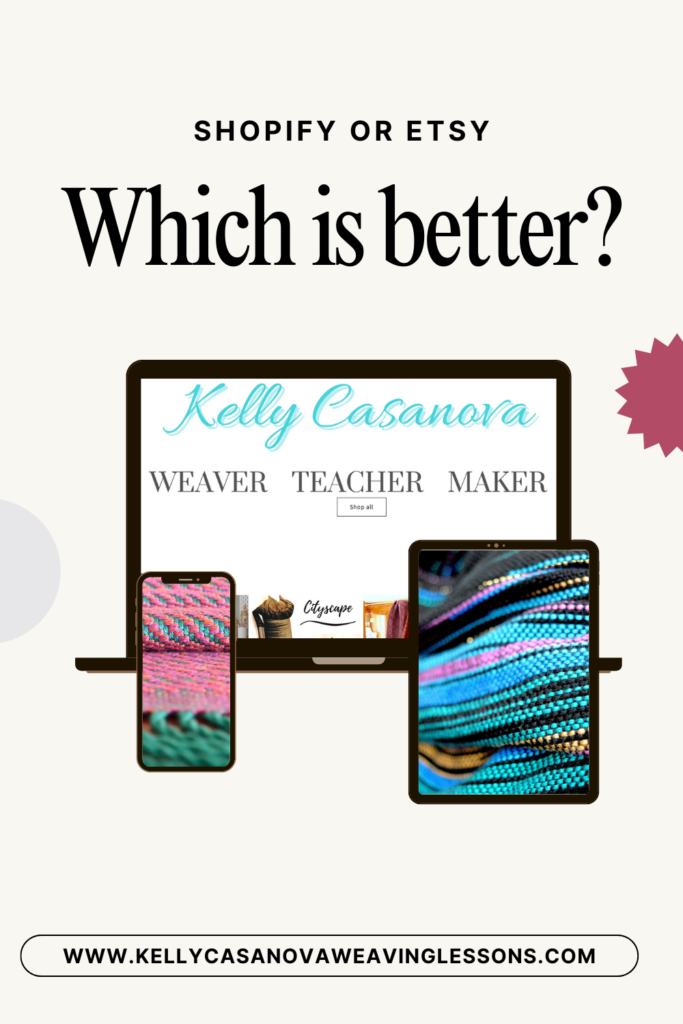
You also don’t own your shop and can be removed from Etsy at any time without warning. This has happened to many sellers who inadvertently or mistakenly breached copyright and had their shops removed. It can be a laborious and time consuming process to get a shop back and results in lost revenue while you’re trying to sort out the issues with Etsy customer service (which can be frustrating, to say the least).
I understand why Etsy does deactivate or remove shops, as copyright can be a huge issue in the selling field, but they seem to throw everyone into the same pool without carefully looking at individual circumstances. An example of this would be if a seller had made a short product video for one of their listings, and in the listing the seller is wearing a branded t-shirt. This can be seen as an instant copyright breach and the seller can be penalised, meanwhile the seller is wondering what on earth happened, as they were just wearing what they were wearing that day when they filmed the video!
A beef that I personally have with Etsy is that it is unrecognisable from back when I started, when it was a truly handmade marketplace. It felt niche and special in those days. Now they allow “vintage”, “supplies” and even print on demand. It feels more like a commercial shopping centre.

Shopify Pros
Shopify has a professional, clean and customisable look. Even if you don’t customise anything it still looks great and is easy to navigate.
It’s easy to setup and use and payments and ordering are simple processes
One of the best and most important part is that your own shop on the internet, you own it and can collect emails of your customers. You set your own parameters and no one can take the shop from you.
You can have a domain name of your own choosing for your shop, so it’s easy for customers to find.
Shopify Cons
You need to have a way to get eyes on your shop, Shopify is not a marketplace. If you already have an audience (especially in the form of a mailing list) it won’t be hard to share your shop link. But if you’re starting from scratch it’s going to be much harder for potential customers to find your shop.
The monthly fee that Shopify charges as hosting fees is charged whether you make sales or not. This can be a big disadvantage to a newer seller unless you get a lot of sales right away.
In addition to the monthly hosting fees, there are other fees that you will likely have to pay for customisation. This is not something that I realised when I first signed up for Shopify – I assumed that everything would be covered by the monthly fee. I use some apps for things like displaying customer feedback and social media icons.
Speaking of fees, I’m going to share some of my financials for both Etsy and Shopify to give you an idea of what to expect. Please note that my sales for both can vary immensely from month to month, this is particularly relevant to the Etsy figures considering they take a percentage of earnings.
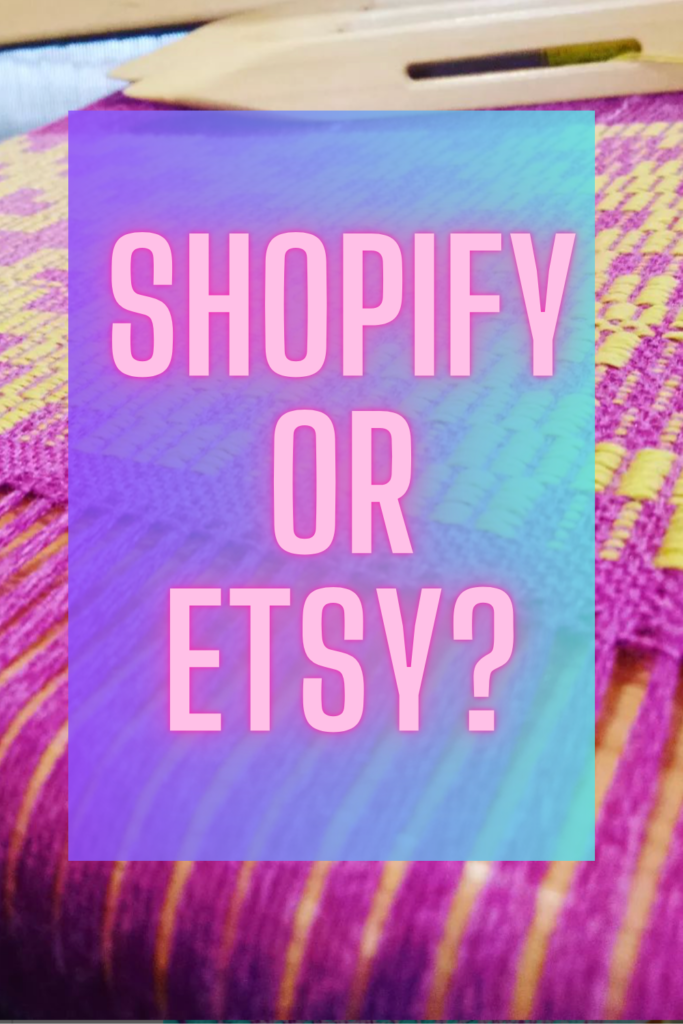
FEES – Please bear in mind that these are my figures. Yours may look quite different.
Etsy per month -For me, the monthly fees range from $50 – $1600 (yes, really!!)
Shopify per month – $42 per month plus apps of around $20 = total of $60 a month
When you compare these figures you can probably see why I started the Shopify store. Overall, for me as an established seller with a very healthy customer base (over 12,000 sales on Etsy at the time of this article) Shopify fees work out at a much more affordable rate and are not dependent on my total sales for the month.
FINAL THOUGHTS ON SHOPIFY-
I wanted to share my thoughts as a newer user of Shopify. My sales in my Shopify store have been slower than I had hoped, but that is business in general in the present climate. I’m seeing slow sales in the Online Weaving School, my Etsy store and my affiliate links. There is a lot of economic uncertainty and inflation remains high, this is all having an impact on my business.
Also, having been on Etsy for 16 years, customers are comfortable with seeing and buying from me there. They are familiar with the process and they know where to find me. Not everyone likes change and I completely understand that.
Hopefully people will start to use my Shopify store more as time goes on as I would prefer to continue moving away from Etsy.
If you are interested in starting your own Shopify store, be sure to use my link to sign up! You can get your first month for just $1 when you sign up for a free trial, which is a great way to try out Shopify and see what you think.
Or if you are wondering about different avenues you can take for getting started selling your handmade products, check out there articles:
3 ways to start selling online for free!…
Do you want to start selling your weaving?…
What I would do differently if I started selling now…
I hope you found this article helpful in making a decision for yourself and your own needs as a seller or potential seller.
This post may contain affiliate links. For more information, please see my disclosure policy.

